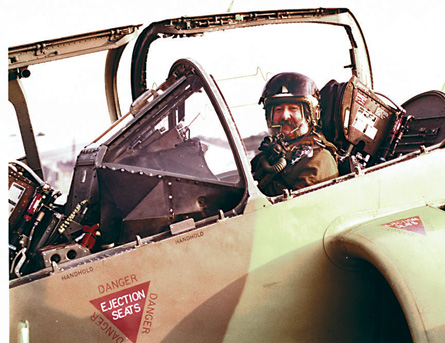John Blake began his adult life at about the same time as the Second World War began. He originally wished to join the Royal Air Force - his father having been in the Royal Flying Corps - but was turned down as at that point there were no vacancies.
He joined the Irish Guards as a subaltern and commenced his own type of war, causing chaos by blowing up bridges and, for a short time, owning a Messerschmitt Me109, which he blew up, with spectacular results, in case the original owner re-appeared.
He was heavily involved in Operation Market Garden after landing in Normandy on the beaches. Blake had an individual style of service life. On entering Brussels the local community were found to be "acquiring" back supplies from the Palais de Justice from the recently departed Germans.
Order had to be maintained and Blake, as part of the Regimental Pioneer Platoon (things that go bang) put up notices to say the Palais was mined and to keep clear. It was not until several months later, when back in England recovering from being injured by an unfriendly German shell just outside Arnhem, and attending a refresher course about defusing bombs that he remembered he had forgotten to take the sign down.
His memory was jogged by the instructor complaining about "so many false 'beware of the mines' signs". It was while completing his recovery that he dropped a live grenade while he and his sergeant were on a range checking the results of hand grenades on different types of rock. Without much thought, John picked up the grenade to throw it. It exploded, taking his right hand with it and causing multiple injuries.
 |
|---|
John Blake |
After the war, patched up as well as possible, he attended the Glasgow School of Art where, having to change hands, he trained as an artist - a skill he used until recently and which made him a Fellow of the Guild of Aviation artists and a former chairman.
John found employment with the Royal Aero Club of the United Kingdom as its librarian. This suited him down to the ground as his other love was naval, army and air force history. He had the run of the library at the Royal Aeronautical Society and during this time he was asked to commentate at a small air show.
This was the start of a long and distinguished career as the leading air show commentator this country has "heard". Air shows up and down the country in the 1960s, 1970s, 1980s and into the 1990s had the good fortune to have such a historian and raconteur treating their audience with knowledge and skill.
John will never be replaced as a commentator - and I write this as his successor as chief commentator at Farnborough. My commentating colleagues at air shows have a lot to thank John for as he set the bar and standard we try to emulate.
John is a founder member of the Tiger Club, but because of the his loss of his hand - which he never thought of as a disability - he was unable to obtain his Private Pilots Licence until the UK Civil Aviation Authority relaxed its rules and looked at individual cases on their own merit.
John became a stalwart of the British Aerobatic Association and an international aerobatic judge, and was the contest director for the World Aerobatic Championships in Hullavington, Wiltshire in 1970.
The stories surrounding John - from falling down a nunnery staircase with an armed rocket-propelled grenade (this one did not go off), to meeting aviation greats such as Yuri Gagarin, to towing the Admiral commanding the Royal Yacht Britannia across the forecourt at Buckingham Palace - are all true.
John was a man who would always put himself out to help others and use himself as a stepping stone to develop someone's career.
- All the latest news, video and images from the 2012 Farnborough air show
Source: Flight Daily News




















